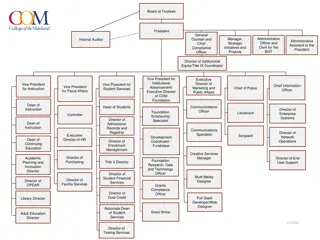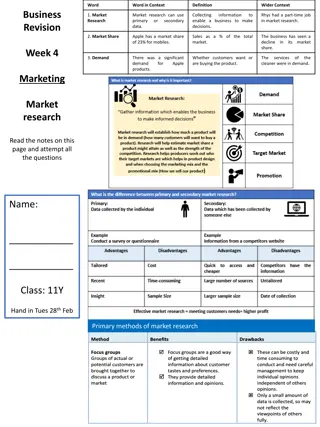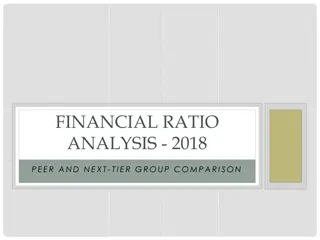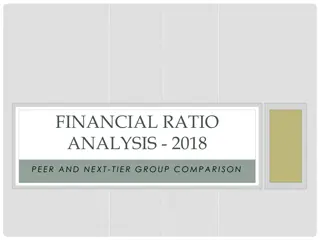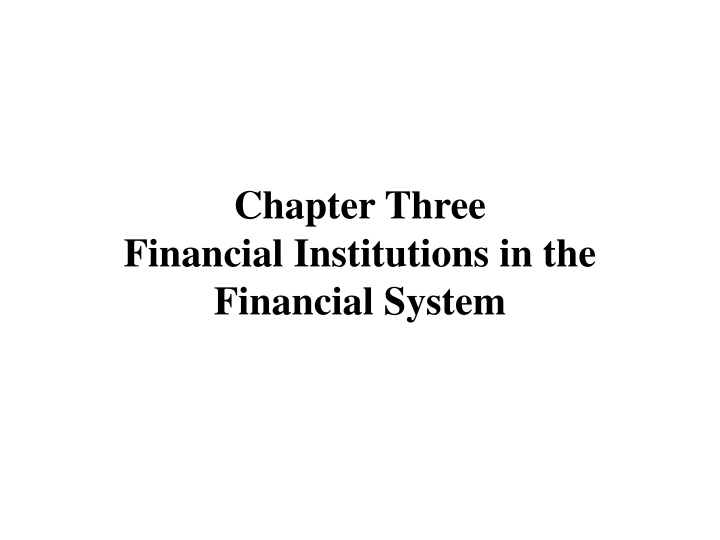
Financial Institutions in the Financial System
Learn about the role of financial institutions in the financial system, including depository intermediaries like banks and nonbank thrift institutions. Discover how these institutions transform financial assets, provide loans, and offer various financial services to individuals and businesses.
Download Presentation

Please find below an Image/Link to download the presentation.
The content on the website is provided AS IS for your information and personal use only. It may not be sold, licensed, or shared on other websites without obtaining consent from the author. If you encounter any issues during the download, it is possible that the publisher has removed the file from their server.
You are allowed to download the files provided on this website for personal or commercial use, subject to the condition that they are used lawfully. All files are the property of their respective owners.
The content on the website is provided AS IS for your information and personal use only. It may not be sold, licensed, or shared on other websites without obtaining consent from the author.
E N D
Presentation Transcript
Chapter Three Financial Institutions in the Financial System
Introduction Business entities include nonfinancial and financial enterprises. Nonfinancial enterprises manufacture products (e.g., cars, steel, computers) and/or provide nonfinancial services (e.g., transportation, programming). utilities, computer On the other hand, financial enterprises, more popularly referred to as financial institutions, provide services related to one or more of the following:
Contd A. Transforming financial assets acquired through the market from depositors to borrowers. B. Exchanging of financial assets on behalf of customers. C. Exchanging of financial assets for their own accounts. D. Assisting in the creation of financial assets for their customers, and then selling those financial assets to other market participants. investment advice participants. E. Providing to other market F. Managing the portfolios of other market participants.
Contd Financial intermediaries / institutions may be classified in a variety of ways. One of the most important distinctions is between Depository Intermediaries. and Non-Depository Below is their basic distinction:
Contd 1. Depository Intermediaries They are the most commonly recognized intermediaries because most people use their services on a daily basis. Depository institutions issue a variety of checking or savings accounts and time deposits and they use the funds to make consumer, business and mortgage loans. In other words, they accept deposits from individuals and firms and use these funds to participate in the debt market, making loans or purchasing other debt instruments.
Contd There are several types of depository intermediaries: commercial banks and nonbank thrift institutions (near banking institutions) or simply thrifts that comprises saving institutions and credit unions. Saving institutions include: associations and mutual savings banks. Mutual savings banks are similar to S&Ls except that they have more diversified uses of funds. savings and loan
Contd Whereas commercial banks concentrate on commercial (business) loans, savings institutions concentrate on residential mortgage loans. Credit unions differ from commercial banks and savings institutions in that they (1) are nonprofit and (2) restrict their business to credit union members, who share a common bond (such as a common employer or union). In addition to accepting deposits, these institutions make loans and provide other financial services. Depository institutions are highly regulated because of the important role that they play in the financial system.
Contd 2. Non-Depository Intermediaries includes companies and pension funds) and investment institutions (like investment companies or mutual funds, finance companies, and real estate investment trusts). It contractual institutions (like insurance Contractual institutions attract funds by offering legal contracts to the public in order to protect the savers against potential risks. (like insurance companies and pension funds) Investment institutions sell shares to the public and invest the proceeds in stocks, bonds, and other securities. (like investment companies or mutual funds, finance companies, and real estate investment trusts).
Individual Assignment (20%-2&3) 1. Discuss financial institutions in Ethiopia 2. Discuss about financial institutions A. Investment companies or mutual funds B. Finance companies and C. Real estate investment trusts 3. Discuss about challenges of the Ethiopian financial institutions. about depository and non-depository the following non-depository the current opportunities and


